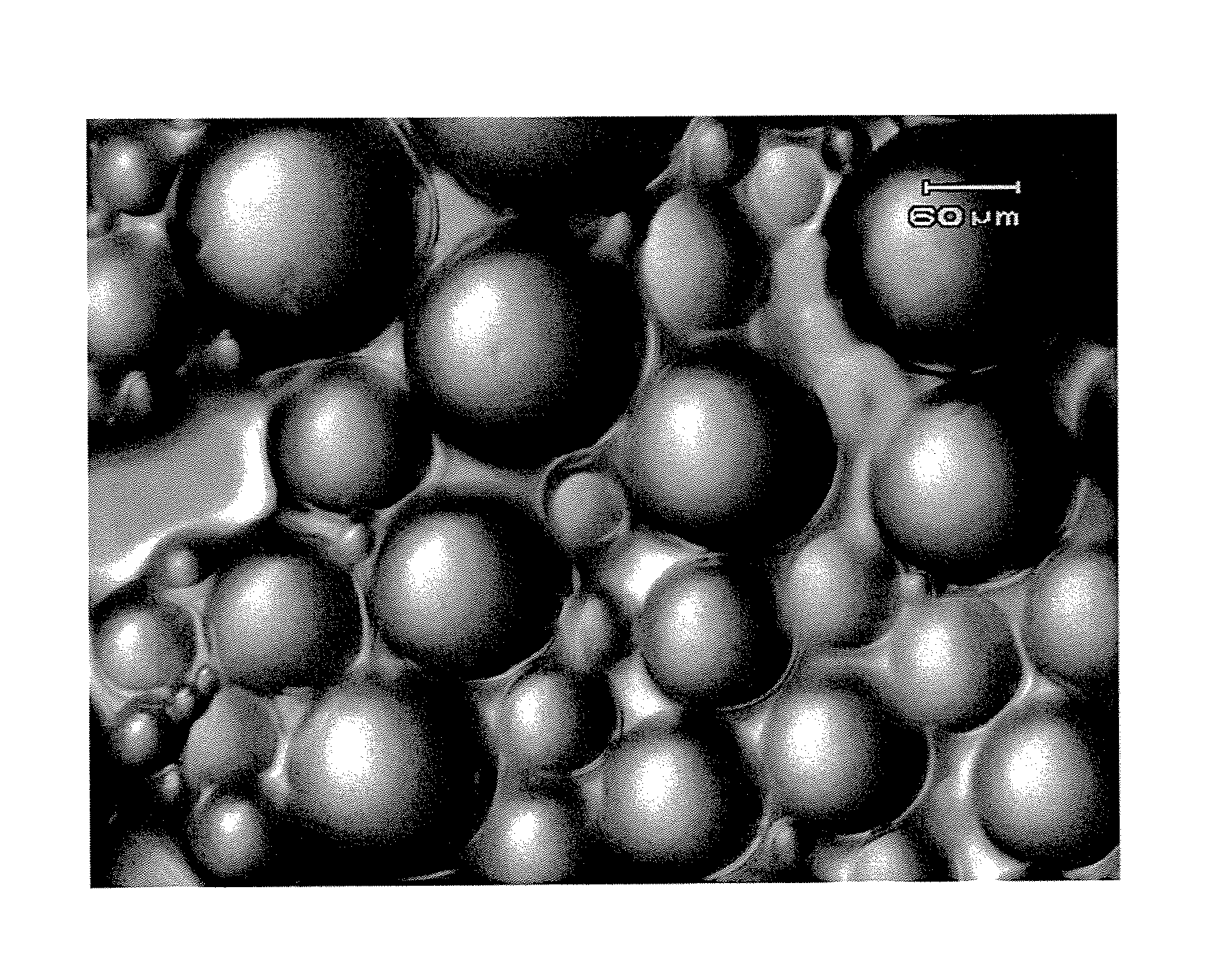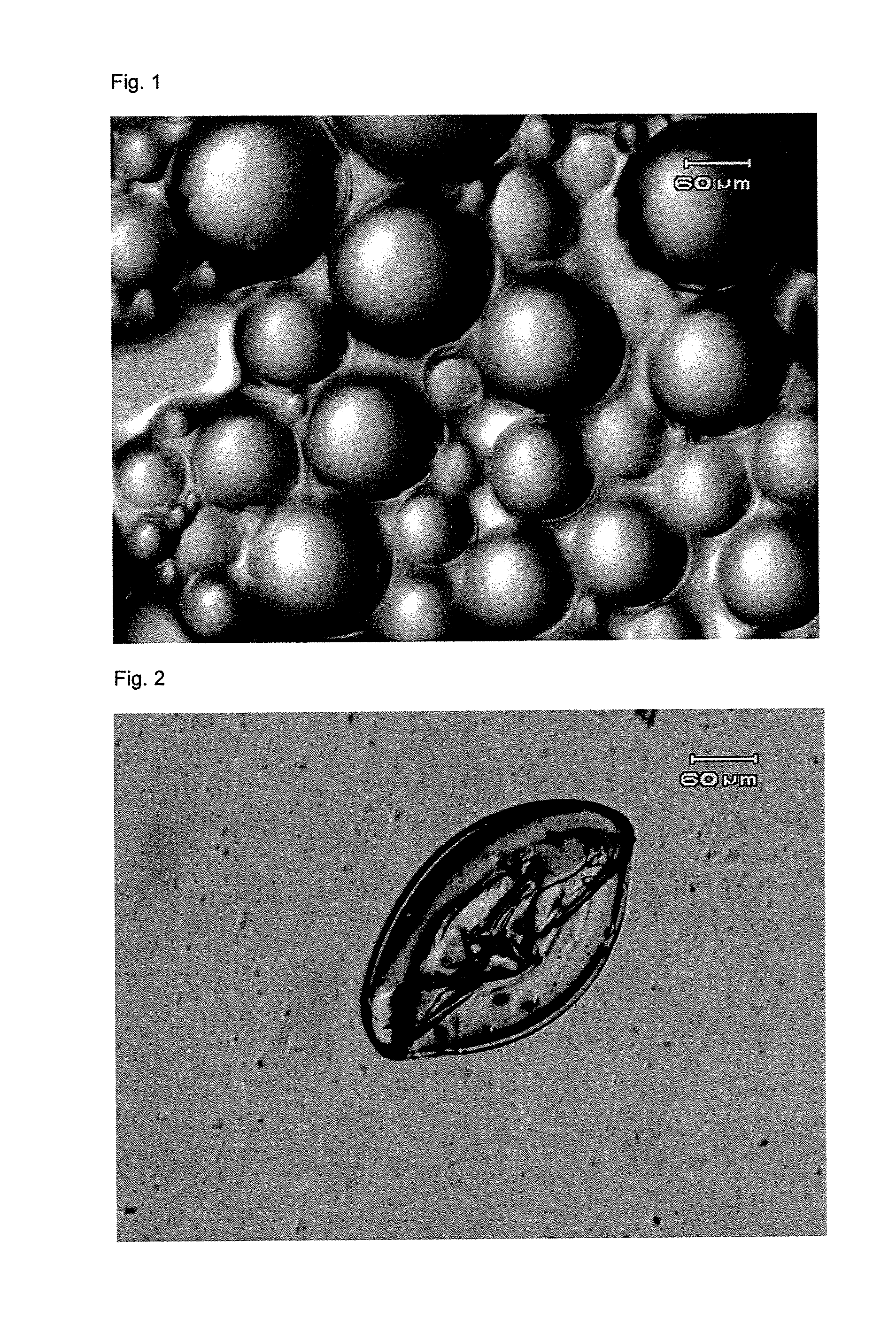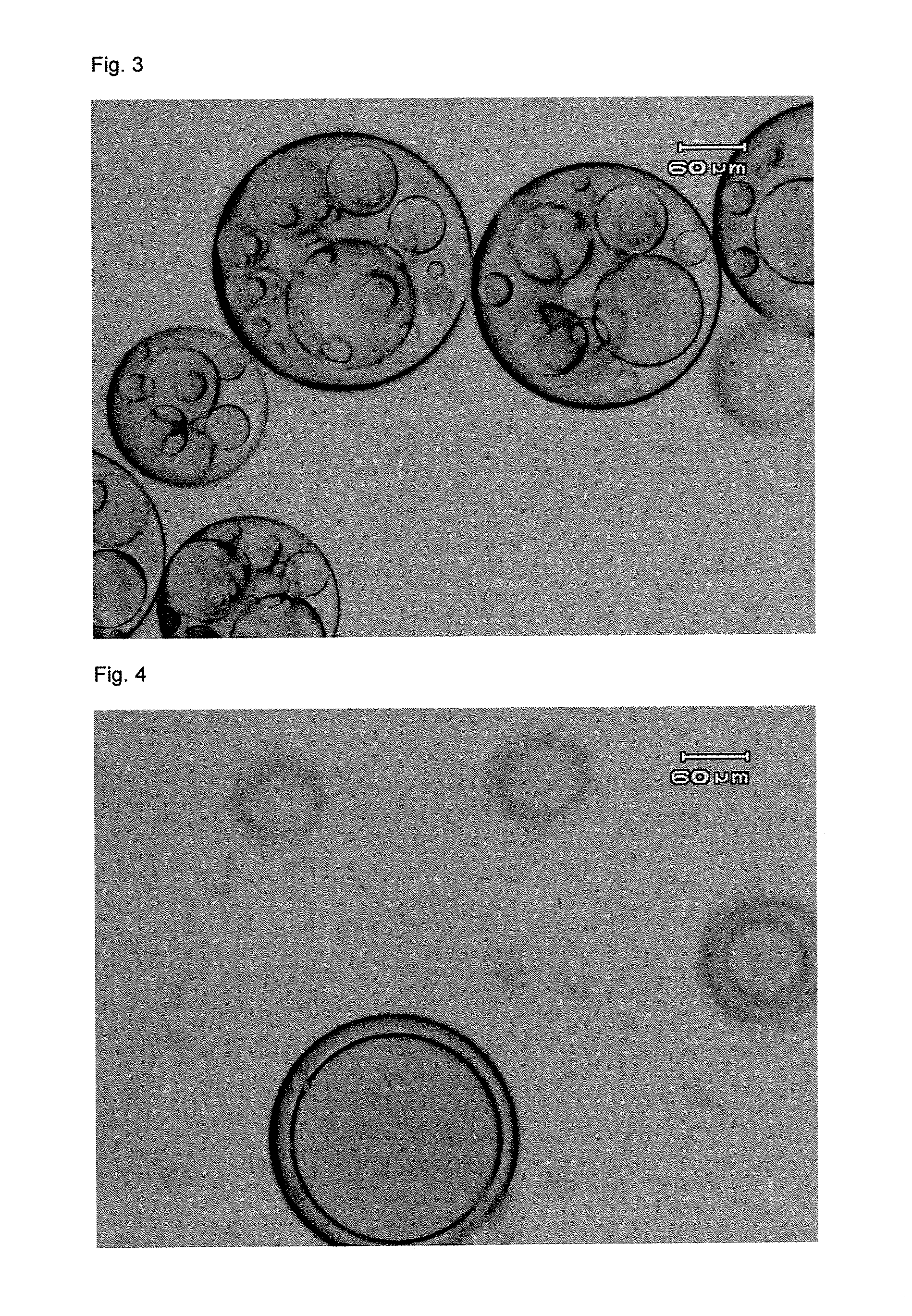Chemically cross-linked elastomeric microcapsules
- Summary
- Abstract
- Description
- Claims
- Application Information
AI Technical Summary
Benefits of technology
Problems solved by technology
Method used
Image
Examples
Embodiment Construction
[0036]The present invention provides a technology for the formation of chemically cross-linked elastomeric microcapsules that allow for the physical separation of their contents from the ambient environment by an elastomeric shell that serves as a diffusion barrier for shell-permeable actives. The elastomeric shell remains intact until such time that sufficient stress is applied to rupture each individual microcapsule to release its contents.
[0037]The present invention involves a confluence of four distinct achievements. First is the development of a process that allows for the production of chemically cross-linked elastomeric microcapsule populations of a controllable mean diameter.
[0038]Second, the invention provides for a novel mechanism for forming and controlling the mean thickness of a polymer shell by utilizing a multi-component encapsulant phase that in certain specific embodiments contains pre-polymer, a cross-linking agent, and a carrier solvent, such that the entire encap...
PUM
| Property | Measurement | Unit |
|---|---|---|
| Temperature | aaaaa | aaaaa |
| Temperature | aaaaa | aaaaa |
| Thickness | aaaaa | aaaaa |
Abstract
Description
Claims
Application Information
 Login to View More
Login to View More - R&D
- Intellectual Property
- Life Sciences
- Materials
- Tech Scout
- Unparalleled Data Quality
- Higher Quality Content
- 60% Fewer Hallucinations
Browse by: Latest US Patents, China's latest patents, Technical Efficacy Thesaurus, Application Domain, Technology Topic, Popular Technical Reports.
© 2025 PatSnap. All rights reserved.Legal|Privacy policy|Modern Slavery Act Transparency Statement|Sitemap|About US| Contact US: help@patsnap.com



